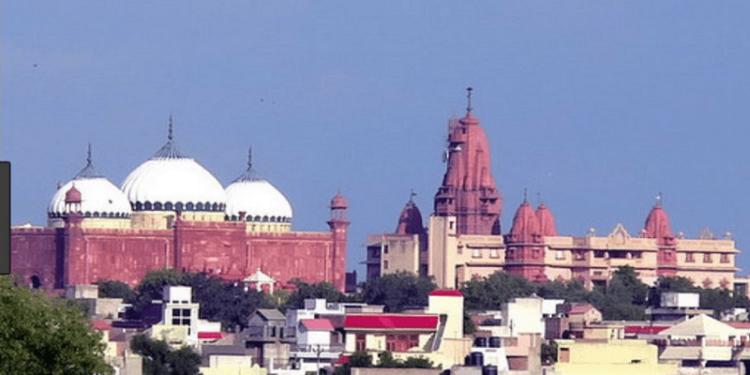The apex court has reserved judgement in the Ram Janmabhoomi case- India’s most awaited, keenly followed legal dispute.
Millions of Lord Ram devotees across the country are now hopeful that as the 134-year legal dispute nears a final verdict, construction of a grand Ram temple at his birthplace in Ayodhya will become a reality. However, the pronouncement of a verdict in the Ayodhya dispute might have repercussions beyond Lord Ram’s birthplace in Ayodhya as well.
The disputed site in Ayodhya is not the only living example of the excesses of the medieval era Islamic invasion. There are a plethora of such temples which bore the brunt of ruthlessness and raw cruelty of the Islamic invaders.
What a favourable verdict in the Ayodhya dispute, if and when pronounced, can do is open the floodgates for legitimate demands of temples at other places. The Ayodhya dispute was decided purely as a property dispute. Whatever the top court, therefore, decides will set a strong judicial precedent in similar matters.
The concerned parties might consider bringing up the issue of other disputed sites of Mathura and Kashi to legal challenge as well. The only legal bar however to such demands will crop up in the shape of The Places Of Worship (Special Provisions) Act, 1991.
The legislation referred to above seeks to “maintain the religious character of any place of worship as it existed on the 15th day of August, 1947.” Section 4 (1) of the Act expressly provides, “It is hereby declared that the religious character of a place of worship existing on the 15th day of August, 1947 shall continue to be the same as it existed on that day.”
The effect of this provision is to maintain status quo in respect of any place if worship as of August 15, 1947. Therefore, even if a place of worship was destructed, vandalised, desecrated, or suffered any damage of a like kind and was subsequently converted in terms of “religious character”, before the cut off date, viz. August 15, 1947, such place of worship would retain its altered religious character.
Not only this, had any suit, appeal or other proceeding been instituted in respect of any such place of worship before coming into force of this Act in respect of such property as described above, even such suit would stand abated (terminated) by virtue of this Act. Moreover, it also bars institution of any fresh suit, appeal or other proceeding in respect of such property.
Although the Ram Janmabhoomi dispute has been exempted from the provisions of this Act, the legislation effectively acts as a bar upon determination of all other such disputes across the country. In the present context, this implies that even after a verdict in the Ram Janmabhoomi case, it will not be possible to bring similar property disputes before the Courts in order to restore the original status of innumerable temples, many of them being prominent ones, that bore the brunt of the Islamic invasion and were in a number of cases converted into Mosques. Since, they were so converted before August 15, 1947, the Places of Worship (Special Provisions) Act expressly excludes the jurisdiction of the Courts to determine disputes arising out of such places of worship.
It is imperative to mention here that the Narsimha Rao government had brought this legislation when the Ram Janmabhoomi movement was at its peak. By bringing this law, the government of that time effectively killed all demands in respect of Hindu temples beyond Ayodhya even before such demands arose in a big way.
The Cental Law might seem like a secular law on the face of it. It defines places of worship as “a temple, mosque, gurudwara, church, monastery or any other place of public religious worship of any religious denomination or any section thereof, by whatever name called.”
While the Act ostensibly gives an equal status to all religious communities, the fact remains that the Act has the most adverse impact on the Hindu places of worship. A majority of the “places of worship” falling within the purview of this Act that were attacked and converted were Hindu temples.
The Islamic invasion witnessed a number of prominent temples being destroyed and converted into Mosques, such as the Kashi Vishwanath in Varanasi that was converted into the Gyanvapi Mosque, the Krishna temple in Mathura that was converted into Idgah Mosque, the Adinath temple in Malda that was converted into Adina Mosque, the Kali temple in Srinagar that was converted into Khanqah-e-Moula and the list goes on endless.
The Act in question might seem like a secular legislation, but the historical context and also the background in which it was enacted, shows that it is probably a colourable legislation, the historical Hindu temples that were razed down being the biggest casualty.
With the Ayodhya verdict around the corner, one of the biggest ideological objectives of the BJP is nearing a conclusion. However, the ruling party must understand that the the Places of Worship Act is a major obstacle in effective justice to several other historical Hindu places or worship which have been razed throughout several centuries in the pre-independence era.
While it is true that Ram Janmabhoomi holds special importance for the Hindus but the religious importance of several other similar sites cannot be undermined. It is now for the Modi government to repeal this Central Law which was imposed upon the country by the Narsimha Rao government at the peak of the Ram Janmabhoomi movement.


































